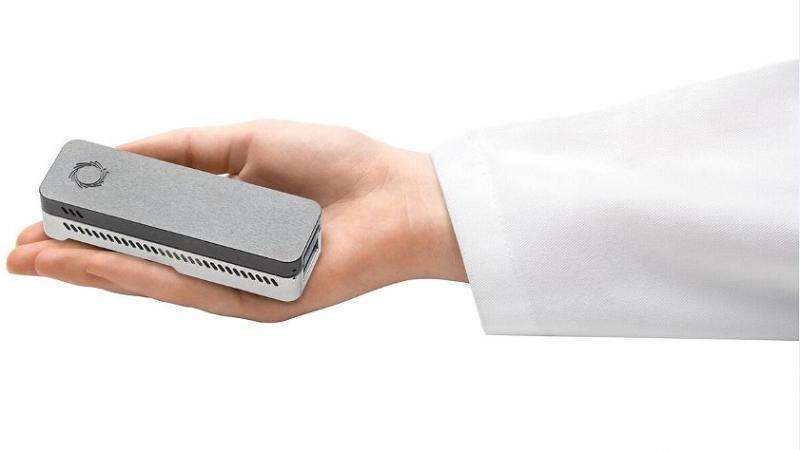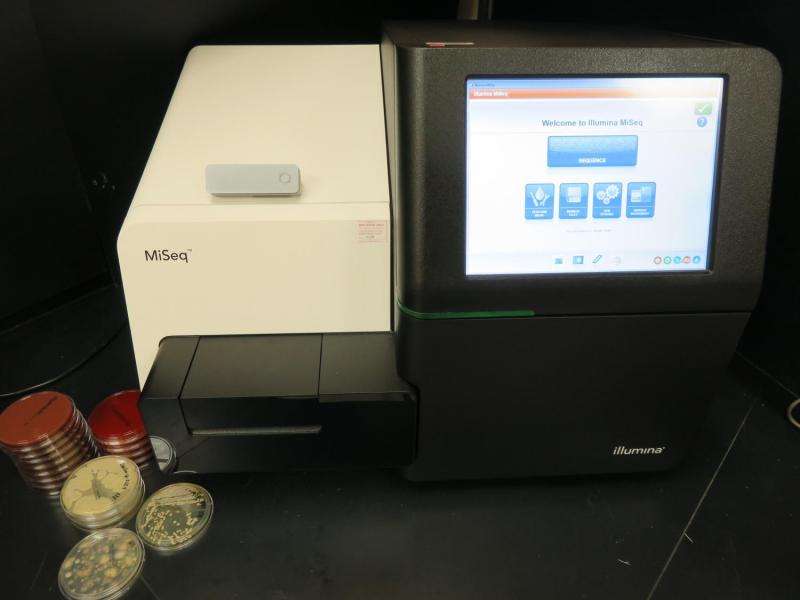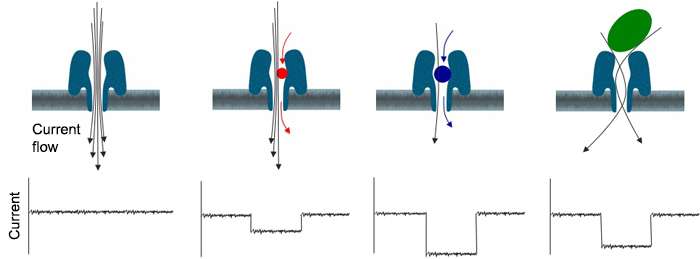Sequencing DNA in the palm of your hand

Much like the miniature, goggle-wearing yellow organisms of the big screen that live to serve, a tiny new device called the MinION, developed by Oxford Nanopore Technologies, promises to help scientists sequence DNA in space. NASA's Biomolecule Sequencer investigation is a technology demonstration of the device.
The investigation's objectives include providing proof-of-concept for the device's functionality and evaluation of crew operability of a DNA sequencer in the International Space Station's microgravity environment. While the petite device is already being used to sequence DNA on Earth, it has never been used to do so in space.
Determining the sequence of DNA is a powerful way to characterize organisms and determine how they are responding to changes in the environment. The goal of this technology demonstration is to provide evidence that DNA sequencing in space is possible, which holds the potential to enable the identification of microorganisms, monitor changes in microbes and humans in response to spaceflight, and possibly aid in the detection of DNA-based life elsewhere in the universe.
"The ultimate goal is to be able to do on the space station or on Mars the things we are able to do normally on Earth when we sequence DNA," said investigator Douglas Botkin, Ph.D. "We want to replicate the laboratory environment, the high-tech equipment and those processes we use terrestrially, and try to demonstrate that functionality in a microgravity environment."
This has never been done in space before and, if successful, this little device could be a big deal.
"Currently aboard the space station there is not a real-time method for identifying microbes, diagnosing infectious disease, and collecting any form of genomic and genetic data concerning crew health," said NASA Microbiologist and Project Manager Sarah Castro, Ph.D. "Meeting these needs relies on returning samples from space to Earth and subsequent ground-based analysis, which takes time. Real-time analysis could inform scientific investigations, measure the impact of spaceflight on the human body, inform medical interventions and define the effectiveness of countermeasures.

"You can look at DNA for permanent changes, what spaceflight is doing to your DNA long-term, but also by looking at the RNA, you can see how the human body or other organisms are reacting in real time," said Principal Investigator Aaron Burton, Ph.D.
During the investigation, crew members will sequence the DNA of bacteria, bacteriophage (a virus that infects and replicates within a bacterium) and rodents from samples prepared on Earth that have known genomic characteristics. Researchers on Earth also will run synchronous ground controls to evaluate how well the hardware is working.
"We absolutely believe that the sequencer will perform successfully in the microgravity environment of space," said Deputy Project Manager and Project Engineer Kristen John, Ph.D.
The tiny, plug and play sequencer - about the size of a large candy bar - is diminutive compared to the large microwave-sized sequencers used on Earth.
"Most sequencers in Earth-based labs involve optics, fluorescence, lasers and other vibration sensitive components that are not suited for spaceflight or microgravity," said Castro. "There is huge power consumption at play with those as well."
Conversely, the compact biomolecule sequencer has minimal moving parts and plugs directly into a laptop or tablet, which supplies power to the device and collects the sequencing data.

The data is collected as the device passes an ionic current through a perforated surface containing nanopores (natural cell membrane ion pores) and measures the changes in the current as biological molecules from samples pass through the pores. The change in current can be used to identify a DNA sequence or other molecules.
Unlike terrestrial instruments whose sequencing run times can take days, this device's data is available in near real time; analysis can begin within 10-15 minutes from the application of the sample.
If successful, this investigation will allow the implementation of the sequencer into operational microbial monitoring, a vast array of medical operations, a research facility on the ISS and integration into astrobiology-based exploration missions.
"The space station and Earth are end members of the gravity continuum, so if the device works on Earth and in microgravity, then it should work in any environment in between like an asteroid or Mars," said Burton.
This DNA sequencer is also being tested for diagnostics on Earth. The development of robust procedures for the operation of this device in low-resource environments has direct relevance to field deployment on Earth, such as for medical operations in the regions where immediate access to a full laboratory is not available. Data collected from this investigation may be useful toward additional development of the device. Additionally, maintaining the sequencer as a research facility on the space station holds the potential to support an immeasurable number of scientific investigations, any of which could have Earth-based applications.
Provided by NASA





















